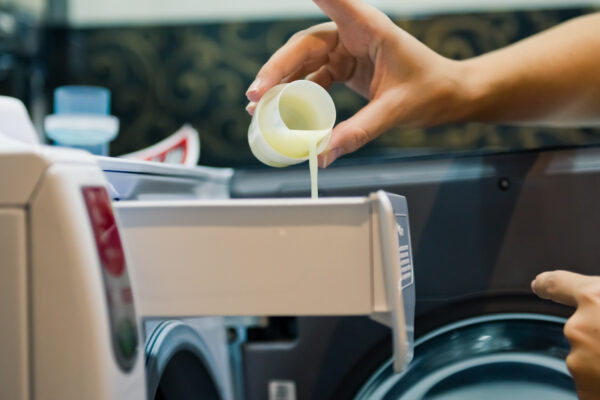Key Points/Overview
Chemicals used in cleaning products, such as laundry detergents, bleaches, dishwashing products and other household cleaners, can help improve cleaning efficiency and hygiene in homes, offices and other environments.
Antibacterial cleansers help kill germs, chlorinated cleaning products help protect against the flu and foodborne illnesses, and cleaning solvents help dissolve greases and oils and often have good biodegradability.
The Federal Hazardous Substances Act requires precautionary labeling on containers of any consumer product that poses a likelihood of injury, to help consumers safely store and use those products, and to provide information about immediate first aid steps to take if an accident happens.

Uses & Benefits
Chemicals in cleaning products like laundry detergent can help these products to perform just as well in cold water as in hot water, enabling consumers to save money and energy when washing their clothes. In addition, highly concentrated liquid laundry formulations made possible by chemistry require less packaging materials and generate less waste.
Household cleaning products containing antibacterial cleaners not only remove dirt and soil, but they also can kill the germs that may cause illness.
Chlorinated cleaning products can help protect against seasonal flu outbreaks and episodes of foodborne illness. Daycare centers, hospitals, restaurants and other public facilities rely upon the disinfectant qualities of chlorine-based cleaners to keep the environment germ-free.
Cleaning solvents are also common cleaning products. For example, glycol ethers are highly effective as an active component of heavy-duty glass, floor and other hard surface cleaning formulations. These solvents have good water compatibility, high solvency for greases and oils and good biodegradability.
For more information on cleaning products, visit the American Cleaning Institute website.

Safety Information
Companies are providing more information than ever about ingredients in their cleaning products. The Consumer Product Ingredient Communication Initiative, launched in 2010, summarizes how companies are providing information about the ingredients in products in four major categories: air care, automotive care, cleaning, and polishes and floor maintenance products. For technical audiences, human and environmental safety data for chemical ingredients used in cleaning products is publicly available via the American Cleaning Institute’s Ingredient Safety Initiative.
Cleaning products, while safe and effective, must be handled appropriately to protect the health of consumers and their families. Users should follow all safe handling instructions on a product’s label before using a particular cleaning product. If a cleaning product is accidentally ingested, call the national Poison Control Center Hotline: 1-800-222-1222, and be sure to have the label from the cleaning product in hand.
Learn more about how to stay safe and healthy when using cleaning products.
The Federal Hazardous Substances Act (FHSA) requires precautionary labeling on containers of any consumer product that poses a likelihood of injury, to help consumers safely store and use those products and to provide information about immediate first aid steps to take if an accident happens.


